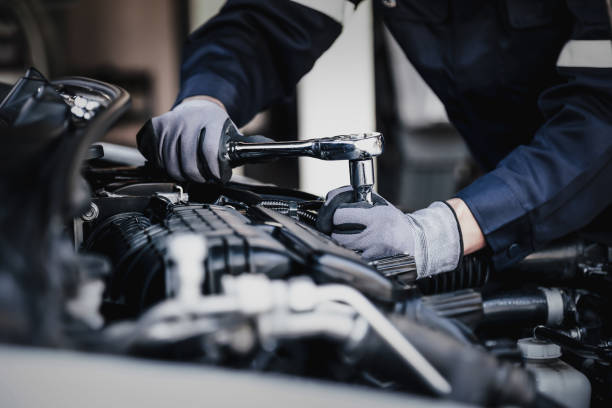Understanding Your Car’s Warning Lights
 Part Eazy
Part Eazy
When you're behind the wheel and a mysterious symbol lights up your dashboard, your car is trying to talk to you. These warning lights are not just random symbols—they’re vital indicators that help you understand the health and performance of your vehicle. But how many of us actually pay attention to what these lights are saying?
Understanding your car's warning lights isn't just about preventing breakdowns—it's about safety, efficiency, and extending the life of your vehicle.
What Are Car Warning Lights?
Modern vehicles are equipped with an array of sensors and systems that monitor everything from engine performance to brake functionality. When something goes awry, your car sends a signal through a warning light on the dashboard.
There are three general categories of warning lights:
Red: Immediate attention required; a serious problem.
Yellow/Amber: A warning—something needs inspection soon.
Green/Blue: Indicators that systems are active (e.g., lights or cruise control).
Most Common Warning Lights and What They Mean
Let’s decode the most frequently seen symbols and what your car is really trying to tell you:
1. Engine Warning Light (Check Engine Light)
Symbol: An engine block
Meaning: Can range from a loose gas cap to major engine malfunctions.
Action: Have it diagnosed immediately—delaying could lead to expensive repairs.
2. Battery Warning Light
Symbol: A car battery
Meaning: Charging issue or failing battery.
Action: Check alternator, battery terminals, or replace the battery if necessary.
3. Oil Pressure Warning
Symbol: Oil can
Meaning: Low oil pressure—can damage the engine.
Action: Check oil level immediately and top up or consult a mechanic.
4. Brake System Alert
Symbol: Circle with exclamation mark or the word “BRAKE”
Meaning: Low brake fluid, worn pads, or brake system failure.
Action: Stop driving if the red brake light appears—have it inspected ASAP.
5. Coolant Temperature Warning
Symbol: Thermometer submerged in liquid
Meaning: Engine is overheating.
Action: Pull over and let the engine cool. Never open the radiator cap while hot.
One of the most overlooked yet critical components related to this issue is the automotive AC compressor. Although often associated with climate control, it also plays a vital role in regulating engine temperature and vehicle performance.
The Role of Sensors in Warning Systems
Every warning light is backed by a sensor. These sensors detect abnormalities in temperature, pressure, emissions, and fluid levels. For example:
Oxygen sensors track fuel efficiency.
ABS sensors monitor wheel speed to ensure safe braking.
Mass Air Flow sensors gauge air entering the engine for proper combustion.
When to Take Action
While some lights might only require a quick fix, others demand immediate attention. Here’s how you can assess urgency:
Act Immediately (Red Lights)
Engine overheating
Brake system failure
Airbag malfunction
Low oil pressure
Schedule a Check-Up (Amber Lights)
Check engine light (if steady)
Tire pressure warning
Emissions issues
Safe to Ignore Temporarily (Green/Blue Lights)
Cruise control indicator
Headlight status
Preventing Warning Light Mishaps
Staying proactive with your vehicle’s health can save you time and stress later. Here’s how:
Regular Maintenance: Stick to your service schedule religiously.
Fluid Checks: Keep engine oil, brake fluid, and coolant topped up.
Visual Inspections: Check for leaks, wear and tear, or corrosion.
Listen to Your Car: If it feels or sounds different, have it checked even if no light is on.

FAQ: Understanding Car Warning Lights
1. Can I still drive if a warning light is on?
It depends on the light. Green/blue is fine, amber means you should get it checked soon, but red means stop immediately.
2. Why do some lights flash while others are steady?
A flashing light often means the issue is more urgent (e.g., a flashing check engine light = misfire).
3. Do warning lights reset on their own?
Some do once the issue is resolved (e.g., tire pressure), while others require a diagnostic reset.
4. Is it expensive to diagnose a warning light?
Basic diagnostics can be affordable, and many auto parts stores offer free code reading.
5. Are dashboard lights the same in every car?
While most symbols are standardized, consult your car’s manual for exact meanings specific to your make and model.
Keep Your Car Running Like a Dream
Dashboard lights may seem intimidating, but they’re your vehicle’s way of saying, “Hey, something needs attention.” Understanding them empowers you to take smart, timely actions that save money and ensure safety.
If you’re facing repeated alerts or performance issues, it might be time to upgrade or replace worn-out components. Whether you’re dealing with faulty sensors, failing parts, or just need expert guidance, a trustworthy brakes shop is crucial—and that’s where PartEazy steps in.
PartEazy is your go-to destination for premium car and truck parts and accessories. Whether you're a DIY enthusiast, a professional mechanic, a performance upgrader, or simply looking for an affordable fix, we offer high-quality products and exceptional service to keep your vehicle running at its best.
Ready to Take Control of Your Dashboard?
Don’t just drive—drive smarter. Decode your dashboard, stay ahead of issues, and give your vehicle the care it deserves with PartEazy.
Subscribe to my newsletter
Read articles from Part Eazy directly inside your inbox. Subscribe to the newsletter, and don't miss out.
Written by

Part Eazy
Part Eazy
Be ready before trouble hits. PartEazy helps you find and order essential car parts online—fast, easy, and reliable for any emergency or upgrade.